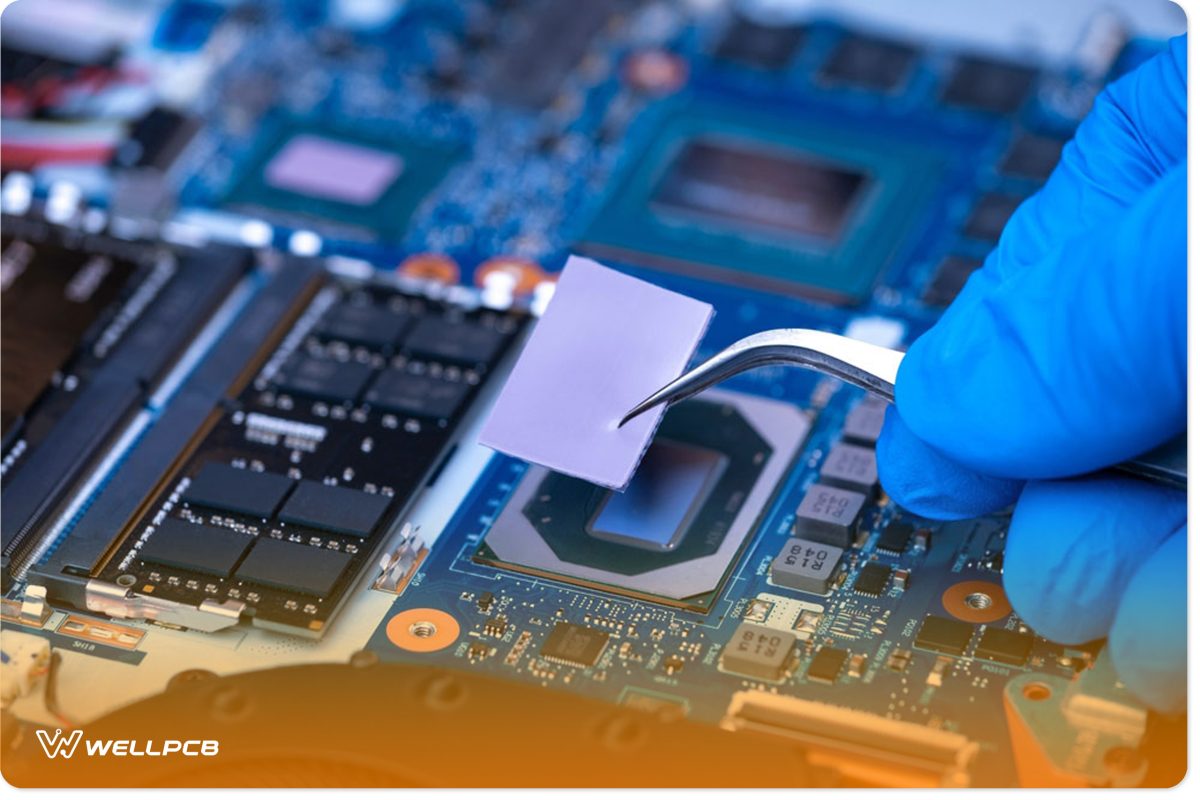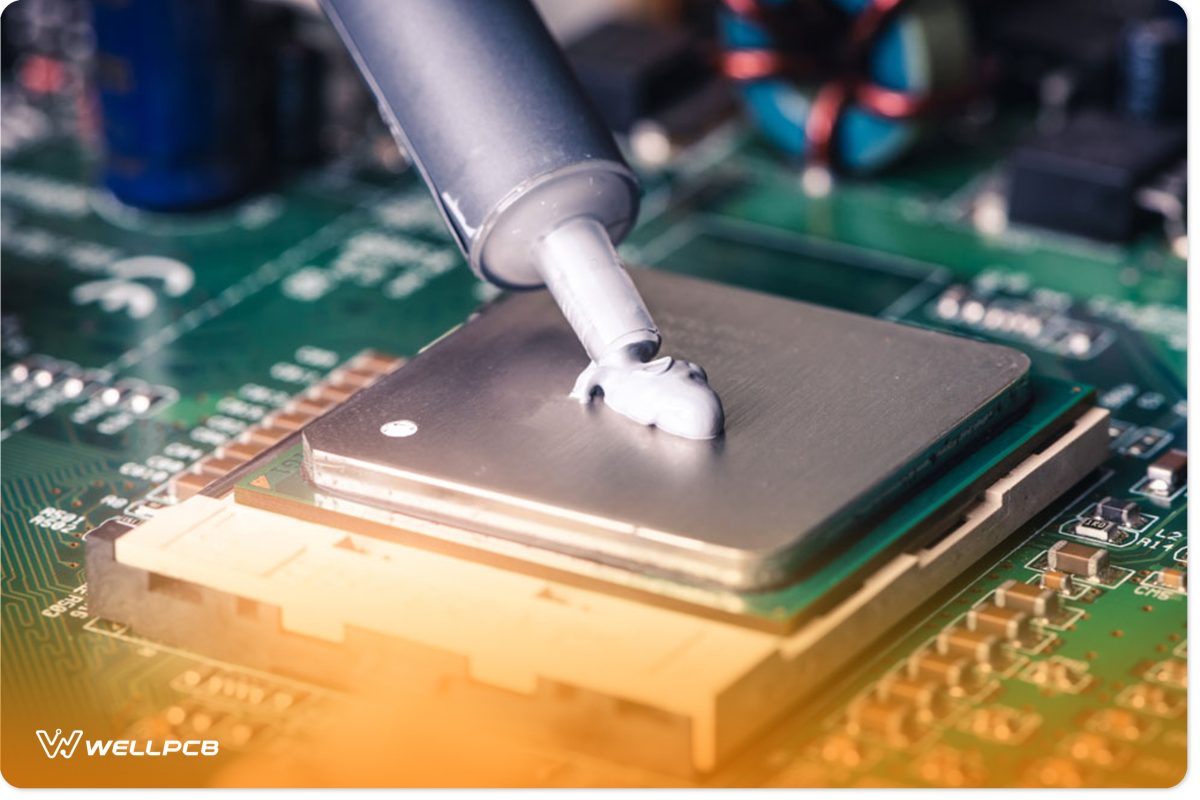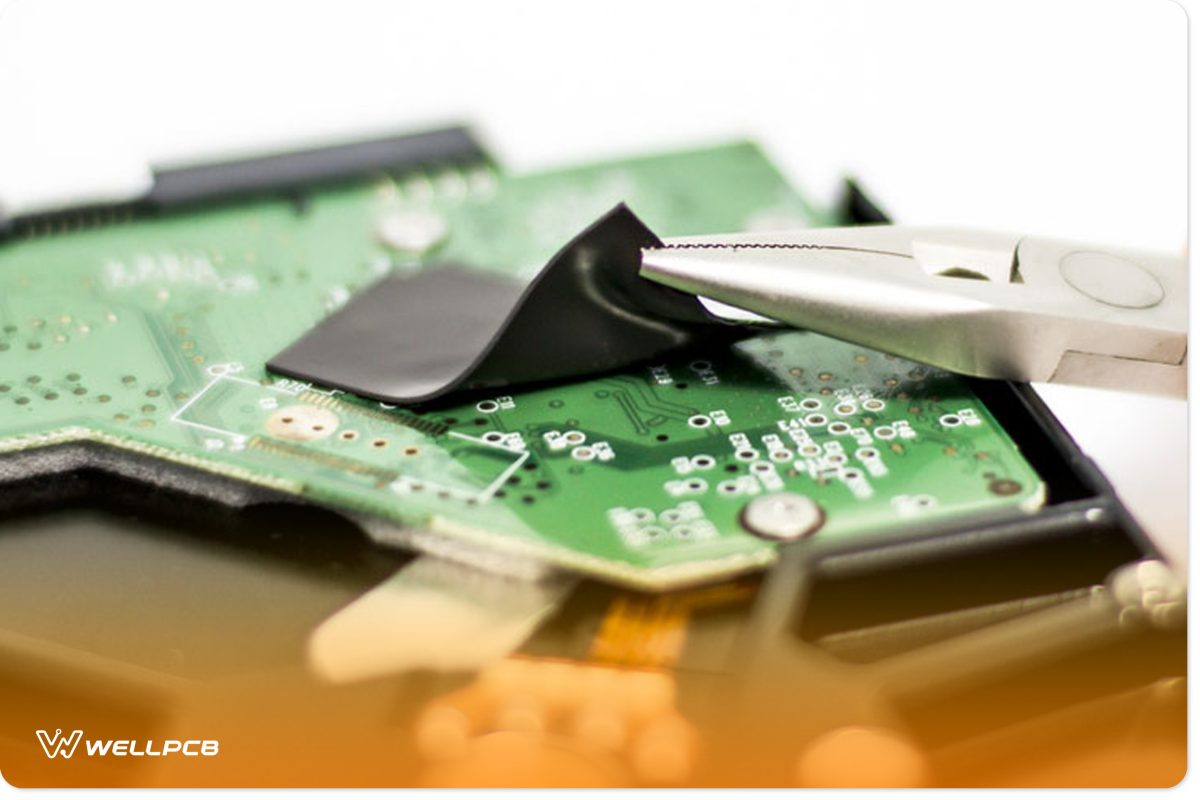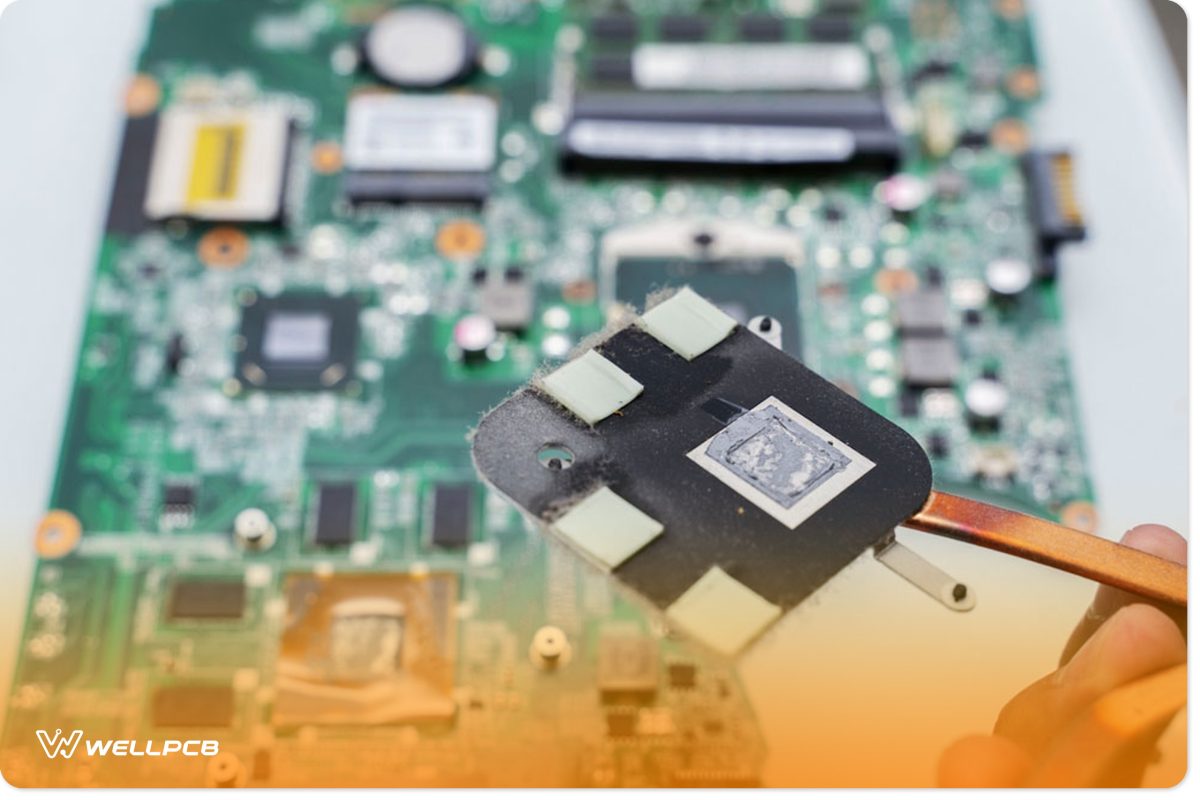Contents
What Is a PCB Thermal Pad?

A technician fixing inside the thermal pad
It’s an electrically insulative device made from materials like graphite and silicon. This pad’s primary function is to dispel heat to a heat sink, which is why it’s usually between CPU parts.
Further, PCB thermal pads perfect the minute imperfections of CPU parts that trap air. In other words, a thermally conductive pad increases heat transfer and removes air.
Are There Alternatives to the PCB Thermal Pad?

A technician is squeezing fresh thermal paste.
Some of the alternatives to the PCB thermal pad include the following:
- Electrically insulative thermal paste
- Liquid metal
- Gap fillers
- Electrically conductive paste
However, it’s best to use thermal pads if you’re working with RAM chips. A thermal paste is an excellent option for the ideal thermal interface material for an integrated heat circuit.
Types of Thermal Pads

A thermal pad held with pliers
The two major types of PCB thermal pads are:
Graphite Thermal Pads
Graphite is the way to go if you need a thin, highly conductive thermal surface material for your project. This thermal pad’s design conveniently handles challenging performance applications.
Further, with its thinner structure, it is easy to wet out and achieve maximum thermal performance on a smooth and parallel surface.
Silicon Thermal Pads
Silicon thermal pads are popular for their effectiveness and versatility. They come in various compression levels and thicknesses to meet a wide range of design requirements and offer useful electrical isolation properties.
In addition to these two thermal pads, there are alternatives like polyester, fiberglass, acrylic, and aluminum. These variants undoubtedly provide unique benefits and drawbacks, but they are best suited for designs with niche requirements.
How Do You Use a PCB Thermal Pad?
Compared to other interface materials, using a thermal pad is simpler. The application is a clean and straightforward process. Also, it doesn’t feature the risk of short circuits and leakage.
Here’s a detailed guide on how to apply a PCB thermal pad:
- First, remove the old interface material and clean all the stains.
- Next, determine the area’s dimension (the actual width and length) of the surface and cut it to the exact measurement.
- Then, detach the protective film from one side.
- Then, put it on the CPU surface and gently apply pressure.
- After, take out the other side of the protective film.
- Finally, fix the CPU.
What Are the Mistakes To Avoid While Using a Thermal Pad?

Thermal pads on a laptop cooler
First, avoid stacking thermal pads one above the other. Doing this may cause increased air gaps between the thermal pads, which decreases heat transfer.
Second, don’t use thermal paste and a PCB thermal pad together. Both materials conduct heat, but if you place them together in a system, they will oppose heat transfer and kill the CPU.
Third, if you eliminate a heat sink, replace the thermal pad to blend to the surface. While at it, remove any dirt in the component.
Thermal Paste Vs. Thermal Pads: Which Is Better?
In truth, both materials will handle the job conveniently. But the one you choose should depend on your manufacturing and design requirements.
For instance, the thermal paste offers impressive wet-out and a super-thin bond line with incredible performance at a low unit cost.
However, thermal paste is messy and may be difficult to control. Further, you may need a precision tool for consistent application. In the long run, thermal paste is expensive, as precision tools are pricey and require ongoing maintenance.
Lastly, the thermal paste may degrade its performance over time due to capillary attraction, pump-out, and thermal cracking.
The Advantages and Drawbacks of the PCB Thermal Pad
Advantages
The process of applying a thermal pad is neat. And it doesn’t attract dust.
Thermal pads provide uniform thickness on each corner, even on irregular surfaces.
You can cut the PCB thermal pads into pieces of your preferred length.
The application can last for over five years within a CPU.
Thermal pads come in up to 0.25 inches to fill big gaps. They are also available in different materials that allow for custom applications.
Drawbacks
Thermal pads are expensive.
Cutting and fitting the pad increases production time.
Final Words
A PCB thermal pad is an excellent alternative to other thermal interface materials, like gap fillers, thermal paste, and liquid metals.
Also, using thermal pads means less mess and an easy application. You only need to peel the film and press the pad slightly.
Further, you must know your key design and functionality factors before using thermal pads.
Do you have more questions on this topic? Please feel free to reach us.





